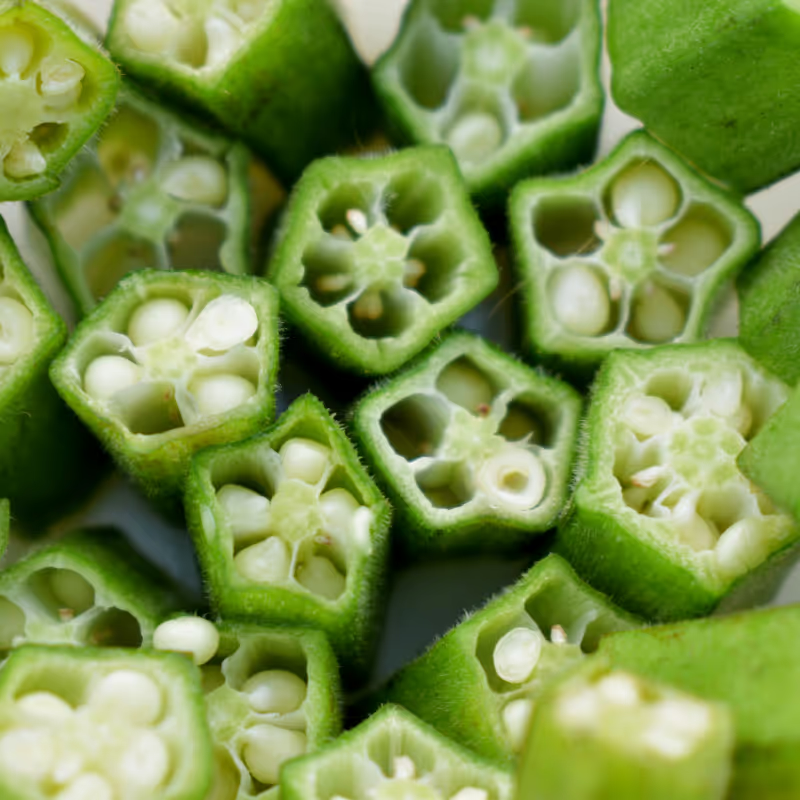What Does it Taste Like?
Okra's flavor is subtle, often described as a blend between eggplant and asparagus with a hint of grassy freshness. Its texture is where it truly stands out. When cooked, okra can be delightfully crunchy or tender, depending on the preparation. The seeds inside provide a slight pop, and the mucilaginous (gel-like) substance released when sliced can thicken soups and stews, making it a staple in dishes like gumbo.
Varieties we grow
Why Should I Eat It?
Packed with vitamins and minerals, okra is a powerhouse of nutrition. It’s rich in vitamins A, C, and K, and also provides a good amount of folate, magnesium, and fiber. These nutrients contribute to overall health by supporting immune function, bone health, and digestive health. Additionally, okra contains antioxidants that help combat inflammation and reduce the risk of chronic diseases.
Okra

July
Imagine a vegetable that’s as versatile as a potato, as nutritious as kale, and as intriguing as a rare gem. Welcome to the world of okra! Often overshadowed by more popular veggies, okra is a culinary treasure waiting to be discovered. Whether you know it as lady’s finger, bhindi, or gumbo, this green pod has the potential to elevate your dishes from ordinary to extraordinary.
Recommended Storage
How Do I Store It?
Short Term
Keep fresh okra in the refrigerator. Place the pods in a paper bag or wrap them in a paper towel and store them in the crisper drawer. This method helps maintain their freshness for up to a week. Avoid washing okra before storing, as moisture can cause them to become slimy and spoil faster.
Long Term
Freezing: Yes, okra can be frozen. Blanch the pods in boiling water for a few minutes, then transfer them to an ice bath. Once cooled, drain and dry the pods, then freeze them in a single layer on a baking sheet before transferring to a freezer bag.
Pickling: Pickled okra is a popular way to enjoy this vegetable. Simply pack the pods into sterilized jars, add a brine made of vinegar, water, salt, and spices, and process the jars in a water bath.
Dehydrating: Dehydrating okra is another excellent option. Slice the pods into thin rounds and use a food dehydrator or a low-temperature oven until they are completely dried. These crunchy snacks can be eaten as-is or rehydrated for use in soups and stews.
